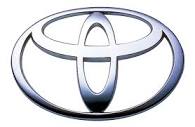RAV4 4WD L4-2.4L (2AZ-FE) (2007)
/Page-338002.png)
HINT: The B line is the lower edge of the inner wall of the filler neck.
Standard capacity: 6.8 liters (7.2 Us quarts, 5.9 Imp. quarts)
HINT: TOYOTA vehicles are filled with TOYOTA SLLC at the factory. In order to avoid damage to the engine cooling system and other
technical problems, only use TOYOTA SLLC or similar high quality ethylene glycol based non-silicate, non-amine, non-nitrite, non-borate
coolant with long-life hybrid organic acid technology (coolant with long-life hybrid organic acid technology consists of a combination of low
phosphates and organic acids).
NOTICE: Never use water as a substitute for engine coolant.
(e)
Press the No. 1 and No. 2 radiator hoses several times by hand, and then check the level of the coolant. If the coolant level drops below the B
line, add TOYOTA SLLC to the B line.
(f)
Install the radiator reservoir cap.
(g) Start the engine and warm it up until the cooling fan operates.
(1) Set the air conditioning as follows while warming up the engine.
(2) Maintain the engine speed at 2,000 to 2,500 rpm and warm up the engine until the cooling fan operates.
NOTICE:
^
Make sure that the radiator reservoir still has some coolant in it.
^
Pay attention to the needle of the water temperature meter. Make sure that the needle does not show an abnormally high temperature.
^
If there is not enough coolant, the engine may burn out or overheat.
^
Immediately after starting the engine, if the radiator reservoir does not have any coolant, perform the following: 1) stop the engine,
2) wait until the coolant has cooled down, and 3) add coolant until the coolant is filled to the B line.
^
Run the engine at 2,000 rpm until the coolant level has stabilized.
(h) Press the No. 1 and No. 2 radiator hoses several times by hand to bleed air.
CAUTION: When pressing the radiator hoses:
^ Wear protective gloves.
^ Be careful as the radiator hoses are hot.
^ Keep your hands away from the radiator fan.
(i)
Stop the engine and wait until the coolant cools down to ambient temperature.
(j)
Check that the coolant level is between the FULL and LOW line.
If the coolant level is below the LOW line, repeat all of the procedures above.
If the coolant level is above the FULL line, drain coolant so that the coolant level is between the FULL and LOW line.
4. INSPECT FOR COOLANT LEAK
5. INSTALL NO. 1 ENGINE UNDER COVER
